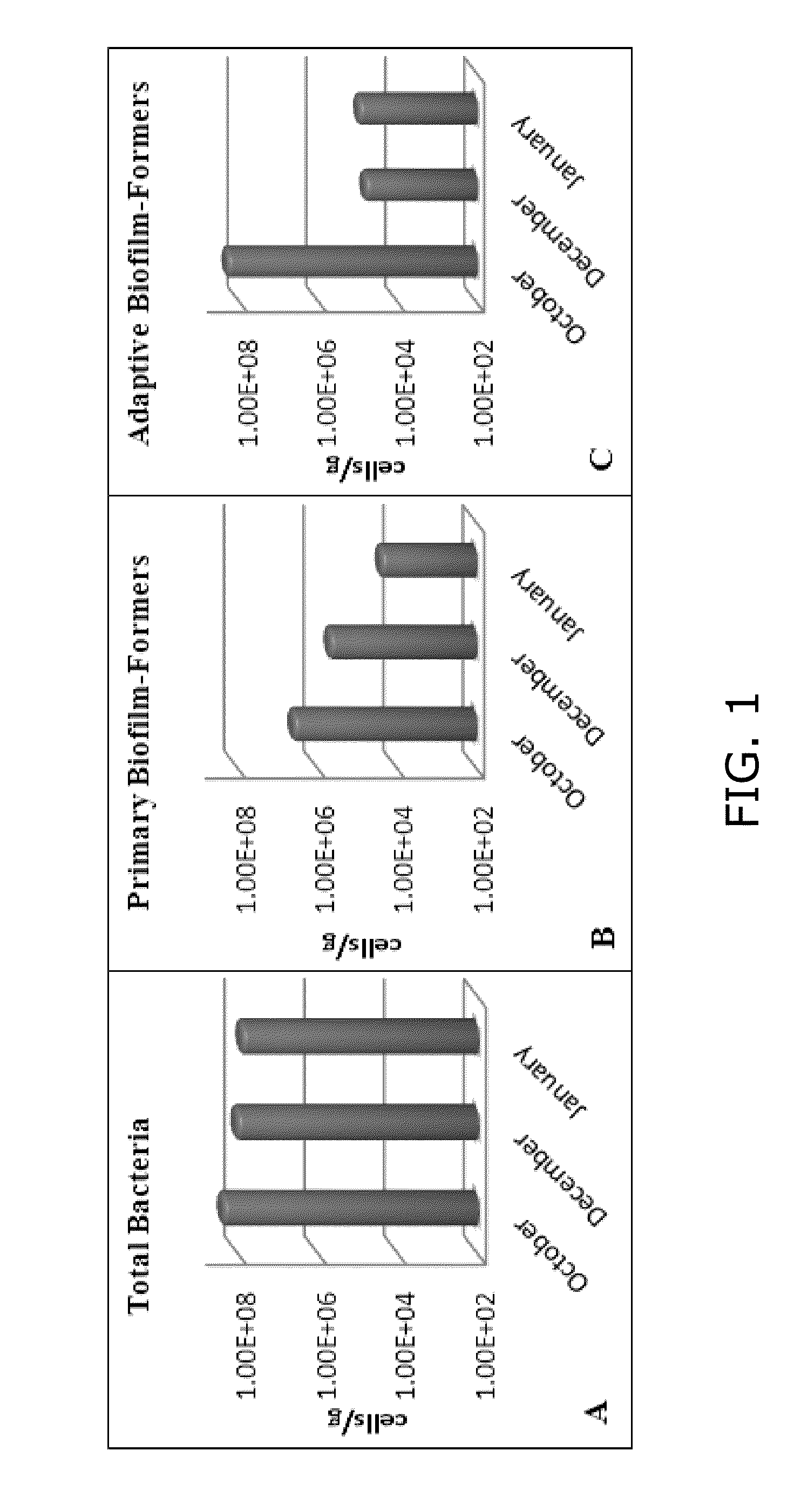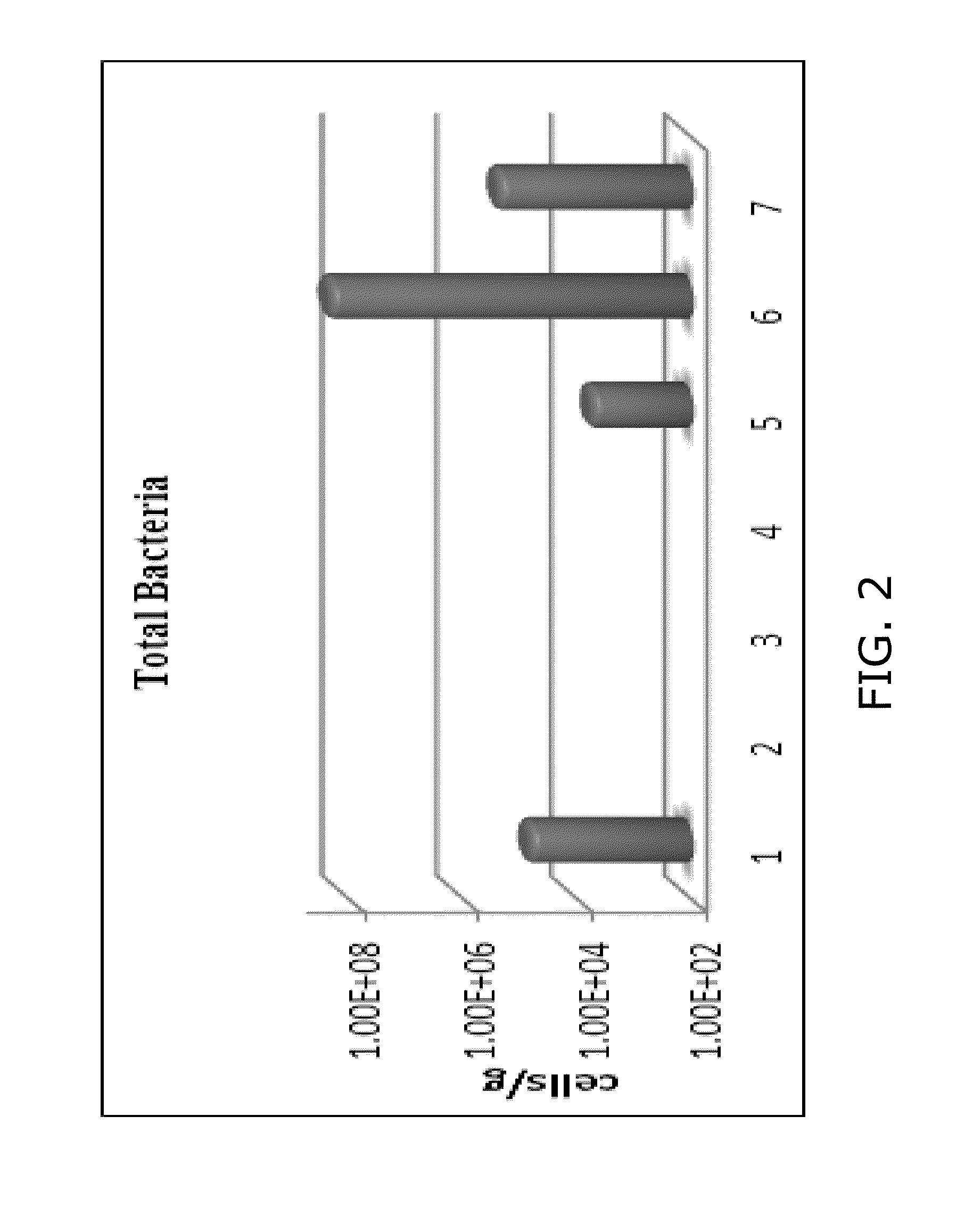Detection and quantification of nucleic acid to assess microbial biomass in paper defects and machine felts
a technology of nucleic acid and microbial biomass, which is applied in the field of detection and quantification of nucleic acid to assess microbial biomass in paper defects and machine felts, and can solve the problems of organisms which caused defects to be killed, more plugs,
- Summary
- Abstract
- Description
- Claims
- Application Information
AI Technical Summary
Benefits of technology
Problems solved by technology
Method used
Image
Examples
examples
[0059]The foregoing may be better understood by reference to the following examples, which are presented for purposes of illustration and are not intended to limit the scope of the invention.
[0060]A coated free sheet mill experienced persistent deposition in one of the machine headboxes, which was believed to be the cause of defects in the final product. Microorganisms were assumed to be the underlying cause of the problem. However, traditional monitoring techniques (e.g. standard plate counts and ATP levels) did not indicate elevated levels of microbial activity.
[0061]Deposit samples from the headbox were analyzed over the course of several months using qPCR techniques. Initial qPCR results from the analysis of headbox deposits exhibited high levels of microbial loading, as well as elevated densities of primary and adaptive biofilm-formers (FIG. 1). The treatment strategy was augmented with the addition of biocides to both the pulper and the broke silo. The feed rate of the oxidant...
PUM
| Property | Measurement | Unit |
|---|---|---|
| concentration | aaaaa | aaaaa |
| defect | aaaaa | aaaaa |
| ion semiconductor sequencing | aaaaa | aaaaa |
Abstract
Description
Claims
Application Information
 Login to View More
Login to View More - R&D
- Intellectual Property
- Life Sciences
- Materials
- Tech Scout
- Unparalleled Data Quality
- Higher Quality Content
- 60% Fewer Hallucinations
Browse by: Latest US Patents, China's latest patents, Technical Efficacy Thesaurus, Application Domain, Technology Topic, Popular Technical Reports.
© 2025 PatSnap. All rights reserved.Legal|Privacy policy|Modern Slavery Act Transparency Statement|Sitemap|About US| Contact US: help@patsnap.com



